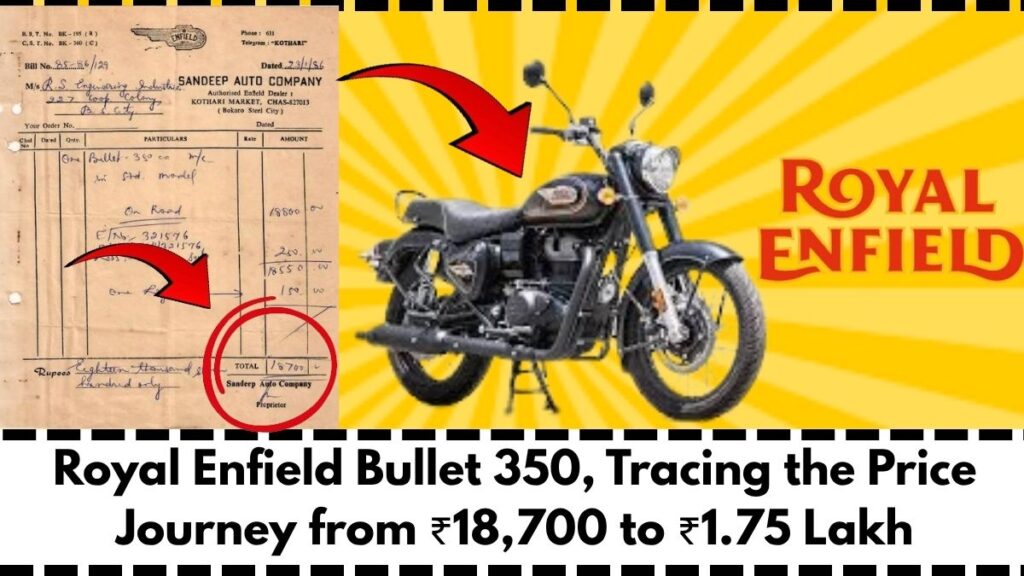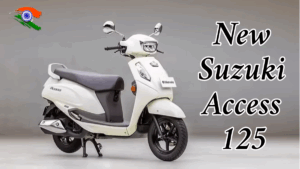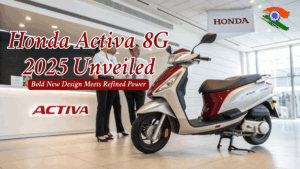The Royal Enfield Bullet 350 is more than just a motorcycle in India—it’s a symbol of heritage, pride, and engineering resilience. Introduced in 1932 and localized in India in the 1950s, the Bullet has maintained its stature through decades of technological revolutions, regulatory changes, and market shifts. One of the most remarkable aspects of its journey is the steady price increase from ₹18,700 in 1986 to over ₹1.75 lakh in 2025. This article explores the evolution of Bullet 350’s pricing and the multiple economic, technological, and regulatory factors that have driven it.

Quick Summary Table
Aspect |
Details |
|---|---|
Model |
Royal Enfield Bullet 350 |
Price in 1986 |
₹18,700 |
Price in 2025 |
₹1,75,000+ |
Total Price Growth |
835% |
Inflation-adjusted Value |
₹1.25 lakh (approx.) |
Brand Strategy |
Heritage + Lifestyle Positioning |
Technology Changes |
Fuel injection, ABS, LED, alloy frame |
Relative Affordability |
Increased (54.7% of average income in 2025) |
Future Price Forecast |
₹2.25 lakh by 2030 |
Official Website |
Price Timeline: A Glimpse into India’s Economic Story
The evolution in the Bullet’s price over time is not merely inflationary—it mirrors India’s broader economic and industrial development.
Year |
Price (₹) |
Key Market Context |
|---|---|---|
1986 |
₹18,700 |
Pre-liberalization economy, limited tech |
1995 |
₹42,000 |
Post-liberalization, demand surge |
2005 |
₹70,000 |
Emission regulations introduced |
2010 |
₹98,000 |
BS-III compliance requirements |
2015 |
₹1,20,000 |
Premium branding phase |
2020 |
₹1,50,000 |
BS-VI norms, major tech leap |
2025 |
₹1,75,000+ |
Lifestyle branding, advanced tech |
Inflation vs. Actual Price Growth
To understand whether the price increase is justified, we compare the expected cost of the Bullet adjusted for inflation with its actual market price.
Period |
Avg. Inflation |
Inflation Impact |
|---|---|---|
1986–1995 |
8.8% |
117% |
1996–2005 |
5.4% |
68% |
2006–2015 |
7.2% |
99% |
2016–2025 |
4.8% |
59% |
If the 1986 price is adjusted for cumulative inflation alone, the Bullet should cost around ₹1.25 lakh today. The difference of ₹50,000+ is due to technological and regulatory investments, and strategic brand elevation.
Emission Norms and Environmental Compliance
India’s shift to stringent emission norms—from BS-I to BS-VI—has led to notable jumps in manufacturing expenses.
-
BS-IV to BS-VI transition alone added ₹15,000–₹25,000 in cost.
-
New components such as:
-
Fuel injection systems
-
Catalytic converters
-
Oxygen sensors
-
ECU (Engine Control Unit)
-
These innovations have not only reduced emissions but also enhanced performance and reliability.
Technology Overhaul: 1986 vs. 2025
The Bullet 350 today is a drastically different machine in terms of engineering and functionality.
Component |
1986 Specification |
2025 Specification |
|---|---|---|
Engine |
Cast iron, carburetor |
Aluminum alloy, fuel-injected |
Braking |
Drum brakes |
Disc brakes with ABS |
Electricals |
6V, basic |
12V system, LED lighting |
Ignition |
Magneto |
Digital ECU with electronic ignition |
Frame |
Basic tubular steel |
Precision alloy frame |
Instrument Cluster |
Analog, minimal |
Digital-analog combo with Bluetooth |
The Brand Shift: From Commute to Culture
Since Eicher Motors took over Royal Enfield in 1994, the brand has repositioned itself:
-
From utility to aspirational lifestyle
-
Heavy focus on:
-
Design innovation
-
Marketing the “Royal Enfield experience”
-
Community-building via rides, clubs, and festivals
-
This strategic shift allowed Royal Enfield to command premium pricing while fostering brand loyalty.
Craftsmanship and Manufacturing Evolution
Modern Bullet models are produced in advanced factories with:
-
Precision tooling
-
Stringent quality controls
-
Hand-assembled iconic components
This hybrid of craftsmanship and automation adds uniqueness and justifies the premium.
Affordability in Real Terms
Despite rising prices, the Bullet has become relatively more affordable when compared to rising income levels.
Year |
Bullet Price |
Avg Urban Income |
% of Income |
|---|---|---|---|
1986 |
₹18,700 |
₹24,000 |
77.9% |
2025 |
₹1,75,000 |
₹3,20,000 |
54.7% |
Competition and Differentiation
In a crowded 350cc segment, the Bullet remains competitive because of its:
-
Retro design and legacy value
-
Community-driven marketing
-
Trademark thump and stance
Competitors may offer better performance specs, but the Bullet’s emotional and cultural connect keeps it ahead.
What Lies Ahead: Bullet 350 in 2030
Future developments affecting price and features:
-
Electrification: May lead to R&D cost transfers
-
Stricter safety norms: Could add ₹8,000–₹12,000
-
Potential scarcity premium for ICE (Internal Combustion Engine) vehicles
-
Forecast Price by 2030: ₹2.25 lakh
Frequently Asked Questions
Q: Why is the Bullet 350 more expensive than other bikes in its category?
A: It carries heritage value, iconic styling, and premium craftsmanship which justify the higher price.
Q: Is the Bullet 350 worth buying in 2025?
A: Yes, considering its technological upgrades, improved comfort, and brand value, it continues to be a solid choice for lifestyle riders.
Q: Will prices continue to rise in the future?
A: Likely, due to regulatory changes, inflation, and product enhancements. However, the rate may moderate compared to the last decade.
Q: How does the 2025 Bullet differ from the 1986 version?
A: The 2025 version offers superior safety, performance, and durability while retaining its classic character.
Q: Is the Bullet 350 still handcrafted?
A: Partially. While modern techniques are used, key parts are still assembled manually, preserving the bike’s authentic appeal.
Conclusion
The Royal Enfield Bullet 350’s price journey from ₹18,700 in 1986 to ₹1.75 lakh in 2025 is a compelling narrative of India’s evolving economy, consumer aspirations, and industrial progress. Beyond inflation, the price reflects technological enhancements, brand repositioning, and regulatory compliance.
Despite a seemingly steep price tag, the Bullet continues to offer unmatched value in terms of emotional appeal, heritage, engineering upgrades, and social identity. It’s not just a motorcycle—it’s a legacy on two wheels.






